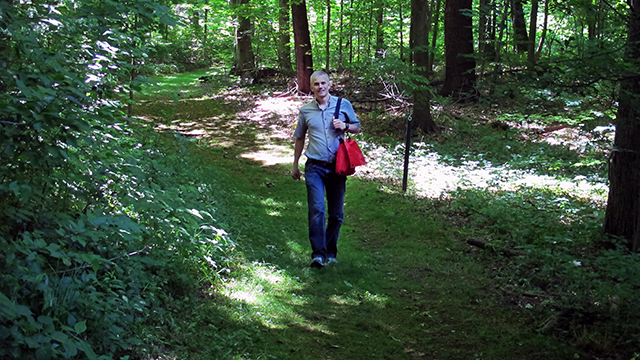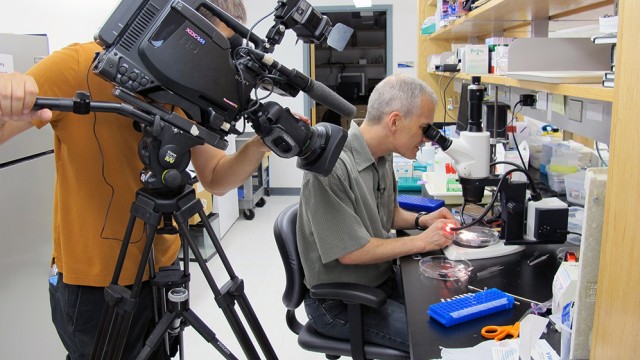Todd Blackledge admits that he sometimes gets called Spider-Man, but he’s not scaling any walls or slinging webs at bad guys. An evolutionary biologist at the University of Akron, Blackledge studies spiders and their webs, a topic that he finds endlessly fascinating. According to Blackledge, spiders get a bad rap. “In the United States, I think we’re kind of taught as children that we’re supposed to be afraid of them,” he says. “But they’re just an incredibly diverse group of animals that play incredibly important roles in our ecosystems as predators of insects.”

Spiders are some of the most diverse animals on the planet -- there are nearly 44,000 known species, all spinning a variety of different types of webs. For Blackledge, these webs are the key to his research. “They leave a record in their web of many different behavioral decisions about how to catch food, how to protect themselves from predators -- all in this web that can be photographed, measured, and even manipulated for experiments,” Blackledge explains. Although his research focuses mainly on how different spiders use their silk to survive in the wild, it also aids the effort to make biomimetic materials. A hot topic in materials science, biomimicry is a discipline that draws inspiration from nature’s best ideas to produce innovative, new materials -- and the silk spiders spin is certainly worth imitating.

“There are spiders that spin more than eight different kinds of silks, and some of those silks are stronger than steel, ounce for ounce, while others are stretchy as a rubber band”, Blackledge says. “Some of them are even adhesive like glues, so this means that they have a tool kit of different types of biological materials that could be used in many different ways for human technology.” Sensational headlines about how humans might harness the strength of spider silk have been floating around for years, but the most popular potential product -- a bulletproof vest made from spider silk – is unlikely, says Blackledge. “Yes, the silk is tough enough to be woven into a shirt to stop a bullet, but it does so by also being very stretchy,” he says. “This means it would stop the bullet after the shirt already stretched through a body. Not a very useful way to stop a bullet, unfortunately.”
Blackledge is focused solely on research, but his work is at the foundation of creating new materials that could help us heal better and faster, and may even save lives. He has high hopes for synthesized spider silk being used in the medical industry because the silk is bio-compatible with human tissue. “That means you can make devices like sutures or replacement tendons that could be put inside humans to repair damage,” he says.
Additional Links